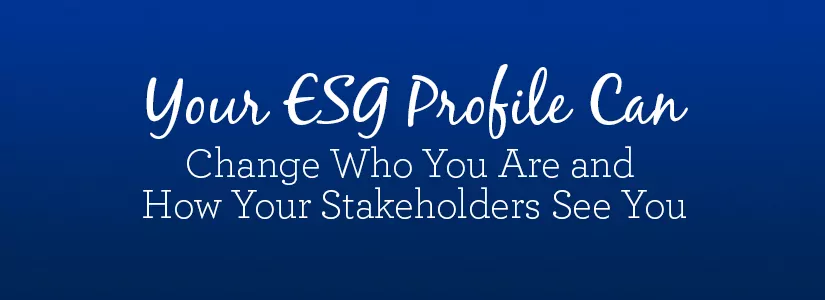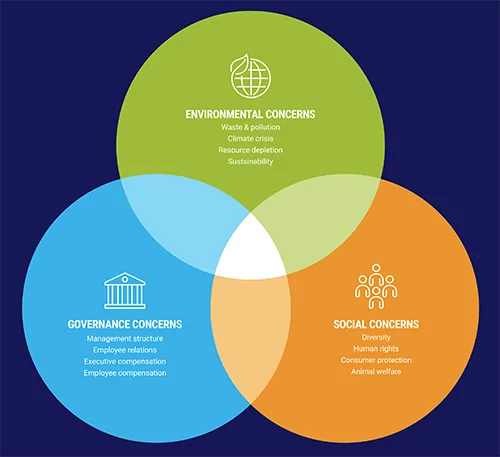- June 21, 2022
- Posted by: Hillary Feder
- Category: Company Culture, Company Engagement

ESG: Critical Engagement Influencers for the New Reality
Recently, when helping a client develop a customer engagement plan that involved creating tangible and intangible touch points throughout the year, they asked me about one of my preferred supplier’s Dun & Bradstreet ESG (Environmental, Social, and Governance) scores. They shared “Our leadership is focused on this and struggling with how to operationalize it”.

The idea that only the standard balance sheet matters in assessing a company has been replaced by a more comprehensive and forward-looking standard.
ESG is Global and Local
D&B’s entry into ESG scores is an acknowledgement of the importance of how businesses conduct themselves on a global scale. Companies around the world are now looking at all the complex abilities and interactions they have to make a lasting difference across a broad array of categories. And businesses are now essentially competing to build stronger, more sustainable, environmentally sound and socially equitable organizations.
What Key Stakeholders Want
ESG scores are a new reality for businesses, and D&B’s scores allow companies to measure themselves against their peer groups. Perhaps more importantly, ESG scores also reflect what employees, customers, clients, and investors are increasingly looking for. These key stakeholders not only want to have their company reflect more modernized measures, but they also want to do business with companies who share the same values.
Consider these key stakeholders and what they are looking for:
- Employees want to work for companies that demonstrate strong commitments to ESG and offer meaningful work, rather than simply providing a paycheck. Employees are increasingly motivated by how their company conducts itself and how it operates in and supports their community.
- Clients want to work with companies that demonstrate strong commitments to ESG and provide solution-based answers to complex work, rather than simply providing the least expensive solution. The trend of wanting smarter, more sustainable solutions are increasingly a client necessity across all industries.
- Investors use ESG to screen potential investments. Astute investors are looking for economic profit AND how a company:
- performs as a steward of nature;
- manages relationships with employees, suppliers, customers, and the communities where it operates; and
- manages leadership, executive pay, audits, internal controls, and shareholder rights.
Hillary’s Commitment to ESG
At Hillary’s, we ask lots of questions to know and understand the practices you have and the actions you are taking. The products you use to bring your actions to life matter. We’re constantly reviewing our processes, our supplier profiles, and our product portfolio to ensure ESG is a key component of our thought process. Recognition moments, present numerous opportunities to identify products that have an environmental and/or social good component.
The four most prominent ways product includes environmental and/or social good are:
- products made from repurposed, or upcycled materials
- manufacturers creating job opportunities for people with barriers to fair wages and employment
- products that when purchased provide a direct financial benefit to a particular cause
- products that lower carbon footprint through manufacturing that is local or in the USA
We want to answer the question regarding where we stand and where those we do business with stand when it comes to ESG measures. It is a powerful statement when D&B is measuring companies in its database and applying an ESG ranking with a comparison to the industry average. It’s a clear indication of where the world – and Hillary’s – is going.
If you are looking for a strategic approach to translating ESG into practical use in your stakeholder engagement planning let’s start the conversation. Call 952-933-8365 or email hillary@askhillarys.com.
